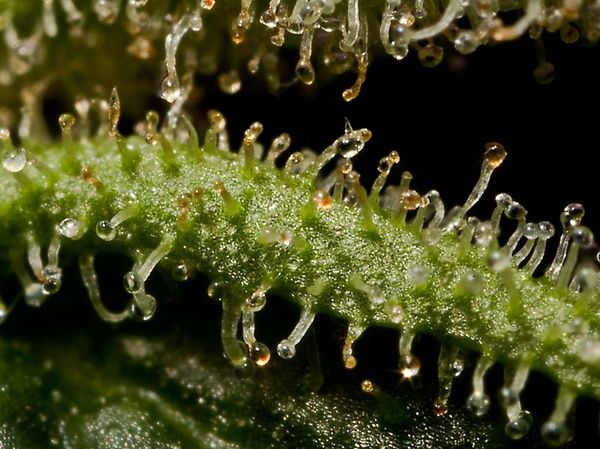- “It is the dose that determines whether a substance is a medicine or a poison.” Paracelsus. 15th-century doctor Loved by many, demonised by many others, man has been using cannabis ever since ancient times.
- Its psychoactive effects, however, have become a double- edged sword, as it can provide consumers with benefits (relaxation and temporary relief from stressful situations), or lead to addictive consumption patterns.
- Cannabis is not an innocuous substance, such that it is necessary to practice responsible consumption and to reduce the risks it entails. For this it is important to have access to all the information, which can help one enjoy it more.

Within the prohibitionist legal context that has prevailed almost everywhere around the world in recent decades, public opinion has diverged, going to two extremes: on one side are those who argue that cannabis is totally innocuous and boasts multiple benefits, while on the other are those asserting that it is a highly dangerous drug that should be completely prohibited. Luckily, it seems the wave of regulation is subsiding and giving rise to more moderation and sanity with respect to this issue. As cannabis emerges from the shadows of illegality, information about it is becoming more objective, accurate and reliable. Terms like "responsible consumption and risk reduction" are gaining steam in a society that seems to be more willing to address the issue of cannabis candidly and directly. Now is the time to demystify cannabis and learn more about the effects and consequences of its consumption. But…what does risk reduction really consist of? How is it done?
With a view to clearing up those questions and explaining in detail how potential cannabis consumption-related risks and damages can be reduced, the Dinafem team has drafted a practical guide to risk reduction for the cannabis consumer. This consists of a series of points that one should keep in mind when it comes to consuming cannabis, and that will help people to make better decisions with regards to questions like what strain to consume, what cannabinoid index is right for a given user, and even how to consume it. Below we sum up the different chapters found in this guide, which we will be publishing on our blog. Let's get to it!
1-The use of cannabis throughout history:
To understand this this plant thoroughly, it is important to know its full background. Cannabis has been used by mankind throughout history. Across different cultures and geographic areas of the planet, it has been put to a range of different purposes:
- Medical use
- Magical-religious use
- Textile-commercial use
- Recreational use
2-The paradigm shift in the use of the cannabis:
The 20th century spawned globalization and, with it, a change in cannabis consumption patterns, as it went from traditional use, characteristic of the most primitive societies, to the kind of consumer use typical of modern societies.
3-The function of cannabis consumption:
There are many cannabis users with very different profiles. Each person consumes marijuana for a broad variety of different personal reasons. The reason one opts for consumption of the substance can be a very important factor in terms of whether it becomes an addiction or not. In general, the functions of marijuana in modern society are the following:
- Adolescent consumption: personal and group affirmation, defiance, and transgression against the adult world and the established social model. The consumption of cannabis in this case forms part of a countercultural movement, a transgression, a symbol of freedom and revolt.
- Recreational consumption: cannabis as a facilitator of social integration and belonging to the group. Occasional consumption at celebrations.
- Therapeutic consumption: the use of cannabis as medicine, or to treat physical ailments (pain, muscular spasticity), or psychological conditions (anxiety, stress, insomnia).
- Escapist consumption: the use of cannabis as an escape valve, to avoid thinking and feeling, to evade reality.
4- The difference between cannabis use and abuse:
Use: consumption whose characteristics mean that it does not entail negative consequences for the individual, those around him, or society.
Abuse: excessive use, in amount or frequency, that entails negative consequences and makes cannabis use detrimental.
5- Form of consumption and associated risks:
There are several ways of consuming cannabis, and, depending on the user's purpose and characteristics, some are more advisable than others.
6-Risks for health:
Cannabis is not an innocuous substance, and its long-term abuse can have negative consequences on one's health. The safest option to avoid potential damage may be abstinence – though this is is widely debated, because it is true that for some people cannabis can deliver certain benefits. In any case, for those who wish to use the plant, for whatever reason, there are some measures that can help to reduce the risks and possible damage done by cannabis consumption:
Measures for the reduction of risks to the respiratory system:
- The use of a vaporiser or other methods, rather than combustion.
- The use of filters that remove impurities.
- Avoiding inhaling smoke too deeply with each drag, and not holding the smoke in more than necessary.
Risks at the psychological level:
Moderating the use of cannabis, or abstaining from its consumption, is recommended if the consumer runs the risk of developing or aggravating psychological disorders. Risk factors:
- People prone to developing psychotic disorders: if any type of psychosis or psychiatric conditions exist in one's family, abstaining from or reducing cannabis consumption is recommended, as there are studies indicating that the plant can contribute to the development of latent mental diseases.
- People who suffer from mental diseases: there are psychological disorders that can be aggravated by cannabis consumption.
- People with negative personal tendencies: demotivation, apathy, isolation…
- Adolescence: scientific studies demonstrate that during adolescence the abuse of cannabis increases the risk of suffering damage at the psychological level.
Risks at the motor skill level:
Cannabis alters the functioning of the central nervous system, so it is necessary to take this into account in order to reduce the risks that it entails.
- Cannabis should not be consumed if one is going to drive or operate any type of machinery.
- Its use is not advisable either before undertaking any kind of high-risk activity. It use in combination with other psychoactive substances is dangerous: consuming cannabis along with other drugs, such as alcohol, for example, can trigger unexpected reactions or bad experiences.
Risk of cannabis contamination:
- Obtaining cannabis from a cannabis club is preferable to buying it through illicit distribution networks.
- Whenever possible users should opt for products of the greatest quality possible.
- Growing one's own organic cannabis is the best way to guarantee a clean final product free of potentially unhealthy chemicals.
7 - Knowledge of the product:
it is important to know what type of cannabis one is consuming. Each strain of marijuana features certain characteristics, and the chemical composition of the plant will determine, in part, its effects. Consuming strains rich in THC is nothing like opting for others low in THC and/or with high CBD levels. The type of cannabis one should consume will depend entirely on his aims. Before consuming marijuana we recommend confirming the following aspects:
- Type of strain and characteristics: whether the plant is Indica, Sativa, etc. This gives one an idea of the type of effect that he can expect.
- Composition: the strain's cannabinoid levels. It is impossible to know the exact percentages in each plant, as this will depend on several factors, including growing conditions. Nevertheless, seed banks usually provide approximate data in this regard. It is especially important to know the THC levels of the cannabis one is going to consume, as those varieties with the most psychoactive punch tend to be related to more psychological problems.



Comments from our readers
Read comments in other languages:
Did you like this post?
Your opinion about our seeds is very important to us and can help other users a lot (your email address won't be made public).